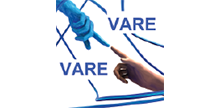Virtual reality poststroke rehabilitation with localization algorithm enhancement
- a Małgorzata Marzec ,
- b Michał Olech ,
- c Ryszard Klempous ,
- d Jan Nikodem ,
- e Konrad Kluwak ,
- f Christopher Chiu ,
- g Anna Kołcz
- a Faculty of Computer Science & Management, Wrocław University of Science and Technology, Poland
- b Fundamental Problems of Technology, Wrocław University of Science and Technology, Poland
- cdef Faculty of Electronics, Wrocław University of Science and Technology, Poland
- g Department of Physiotherapy, Faculty of Health Sciences, Wrocław Medical University, Poland
- g Department of Neurological Rehabilitation, Regional Specialized Hospital in Wrocław, Poland
Cite as
Marzec M., Olech M., Klempous R., Nikodem J., Kluwak K., Chiu C., Kołcz A. (2019). Virtual reality poststroke rehabilitation with localization algorithm enhancement. Proceedings of the 5th International Conference on Virtual and Augmented Reality in Education (VARE 2019), pp. 28-35. DOI: https://doi.org/10.46354/i3m.2019.vare.005
Abstract
The work presents an analysis of the application of virtual reality technology in rehabilitation after the occurrence of stroke. The needs in poststroke therapy, as well as the requirements and technological possibilities were investigated, with the result being the creation of the application for post-stroke rehabilitation. Tests on the application, as well as analyzed studies have shown that this way of rehabilitation as an isolated therapy is not enough to improve the condition of patients. The combination of rehabilitation in a virtual and conventional manner provides a positive effect on the improvement of medical patient motor functions based on the surveyed patients.
References
- Cho S., Ku J., Cho Y. K., Kim I. Y., Kang Y. J., Jang D. P., Kim, S. I. 2014. Development of virtual
reality proprioceptive rehabilitation system for stroke patients. Computer methods and programs in biomedicine, 113(1), 258–265. - Covarrubias M., Bordegoni M., Rosini M., Guanziroli E., Cugini U., Molteni F. 2015. VR system for
rehabilitation based on hand gestural and olfactory interaction. In Proceedings of the 21st ACM Symposium on Virtual Reality Software and Technology, 117–120. - Da Gama A., Fallavollita P., Teichrieb V., Navab, N. 2015. Motor rehabilitation using Kinect: a
systematic review. Games for health journal, 4(2),123–135. - Dias P., Silva R., Amorim P., Laíns J., Roque E., Serôdio I., Pereira F., Santos B. S., Potel M. 2019.
Using VR to increase motivation in poststroke rehabilitation. IEEE Computer Graphics and Applications, 39(1):64–70. - Enjalbert M., Pelissier J., Blind D. 1998. Classification fonctionnelle de la prehension chez l’hemiplegic adulte, Hemiplegie vasculaire de l’adulte et medicine de reeducation, Paris: Masson, pp. 212–223.
- Jang S. H., You S. H., Hallett M., Cho Y. W., Park C. M., Cho S. H., Lee H. Y., Kim, T. H. 2005. Cortical reorganization and associated functional motor recovery after VR in patients with chronic stroke. Archives of physical medicine & rehabilitation, 86(11), 2218–2223.
- Kiper P., Piron L., Turolla A., Stożek J., Tonin P. 2011. The effectiveness of reinforced feedback in virtual environment in the first 12 months after stroke. Neurologia i neurochirurgia Polska, 45(5), 436–444.
- Laver K. E., Lange B., George S., Deutsch J. E., Saposnik G., Crotty M. 2015. VR for stroke
rehabilitation. Cochrane Database of Systematic Reviews. - Laver K. E., Lange B., George S., Deutsch J. E., Saposnik G., Crotty M. 2017. Virtual reality for
stroke rehabilitation. The Cochrane Library. - Laver K. E., Lange B., George S., Deutsch J. E., Saposnik G., Crotty M. 2018. Virtual reality for stroke rehabilitation. Stroke, 49(4): e160–e161.
- Marzec M. 2018. Zastosowanie technologii wirtualnej rzeczywistości (VR) w rehabilitacji poudarowej, Thesis (B.Eng.), Wrocław University of Science and Technology.
- Olech, M. 2018. Algorytmy lokalizacji obiektu 3D, Thesis (B.Eng.), Wrocław University of Science and Technology.
- Ovbiagele B., Turan T. N. (Eds.). 2015. Ischemic stroke therapeutics: a comprehensive guide, Springer, Switzerland.
- Pélissier J., Benaïm C., Enjalbert M. 2002. La préhension et l’hémiplégie vasculaire, Paris:Masson.
- Piron L., Turolla A., Agostini M., Zucconi C., Cortese F., Zampolini M., Zannini M., Dam M., Ventura L., Battauz M., Tonin P. 2009. Exercises for paretic upper limb after stroke: a combined virtual- reality and telemedicine approach. Journal of Rehabilitation Medicine, 41(12), 1016–1020.
- Scrutinio D., Guida P., Lanzillo B., Ferretti C., Loverre A., Montrone N., Spaccavento S. 2019.
Rehabilitation Outcomes of Patients with Severe Disability Poststroke. Archives of physical medicine and rehabilitation, 100(3), 520–529. - Turner-Stokes L. 2010. Goal attainment scaling (GAS) in rehabilitation: a practical guide (vol 23, pg 362, 2009). Clinical rehabilitation, 24(2), 191–191.
- Weiss P. L., Kizony R., Feintuch U., Katz, N. 2006. Virtual reality in neurorehabilitation. Textbook of neural repair and rehabilitation, 51(8), 182–97.
- Zhang, K., Zhang, L., Yang, M. 2012. Real-time compressive tracking, Springer LNCS 7574, 864–877.
